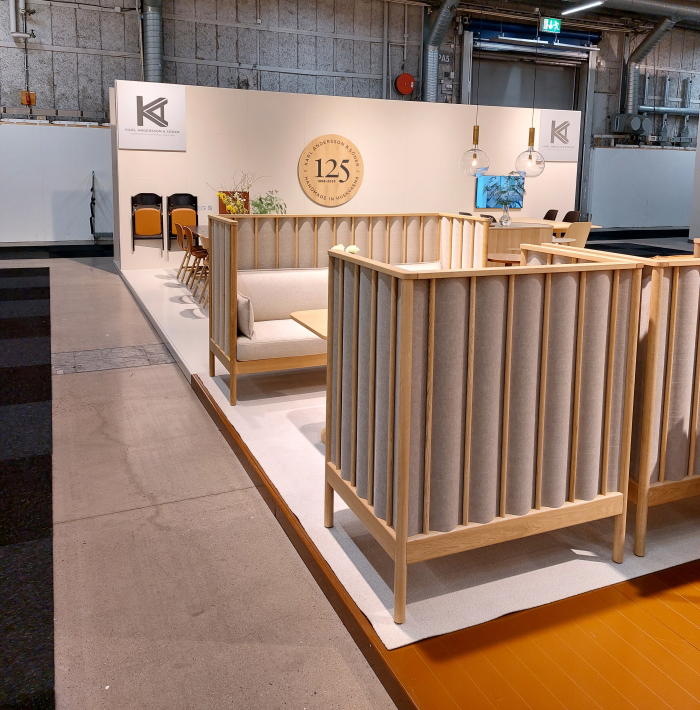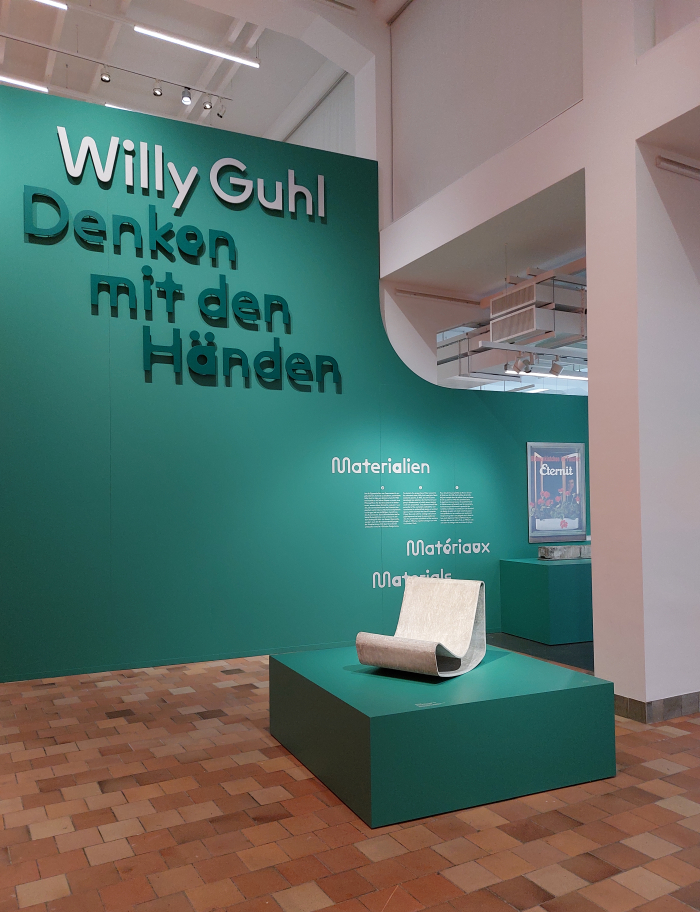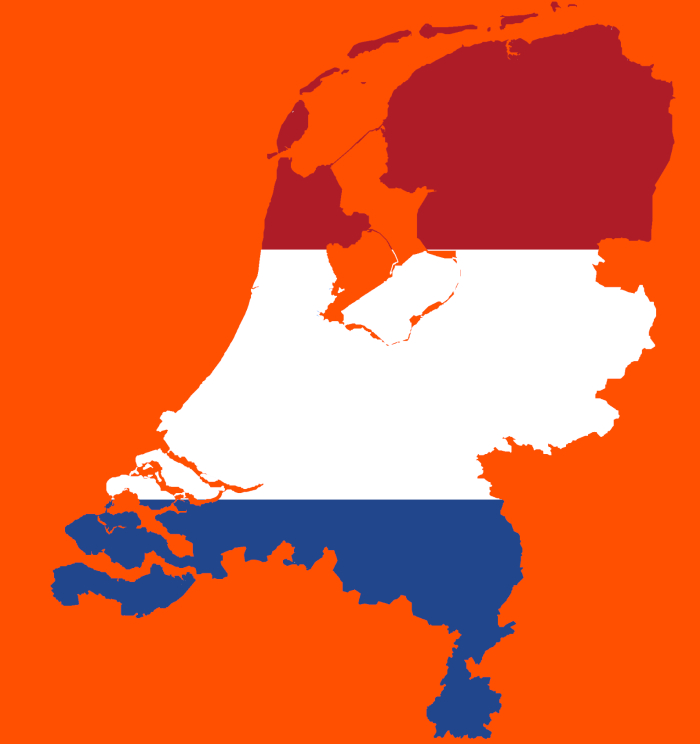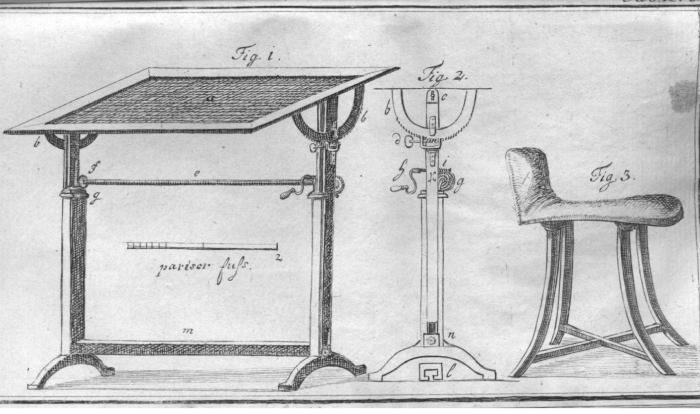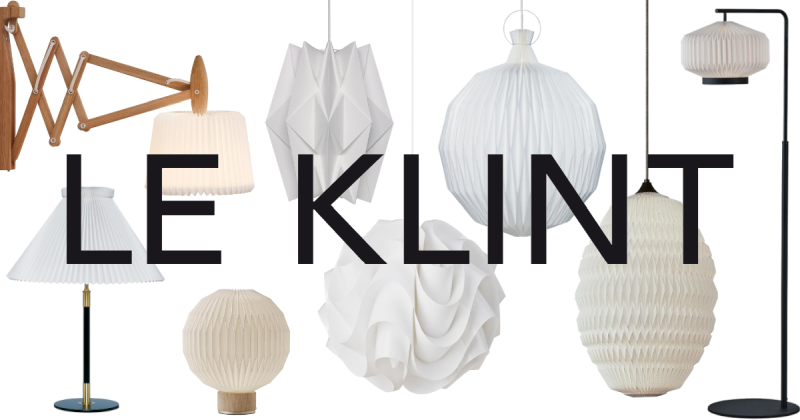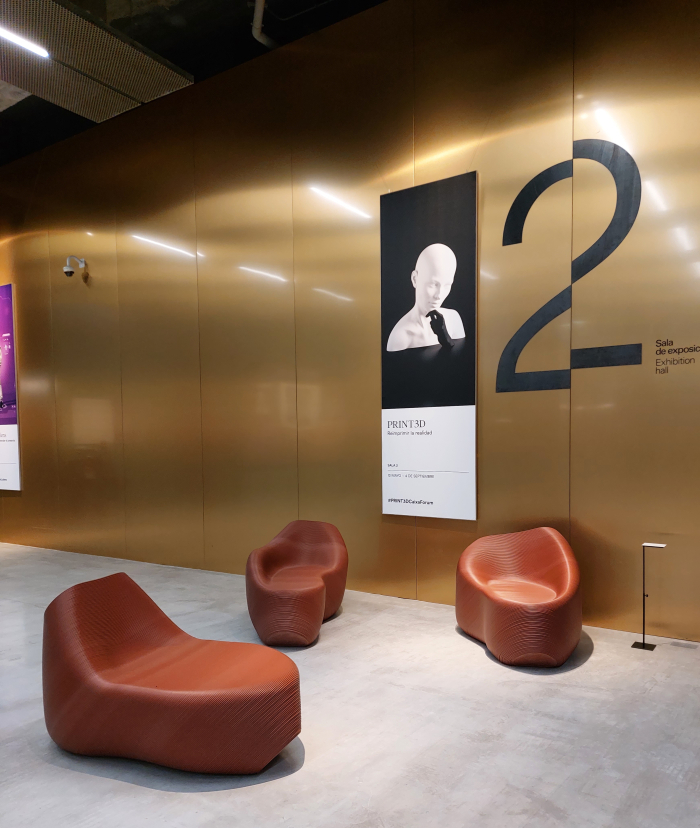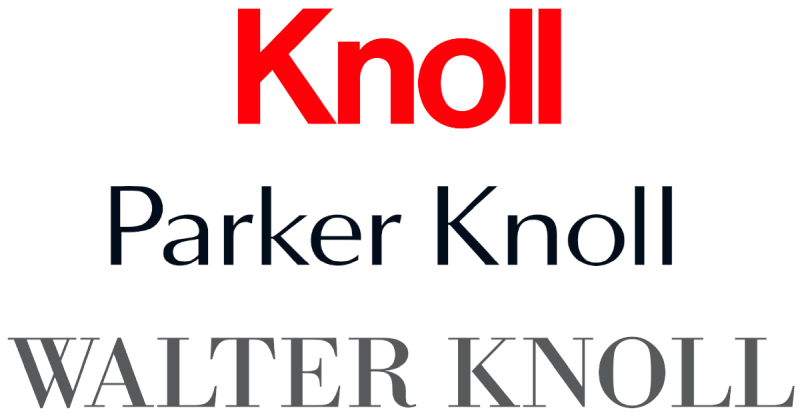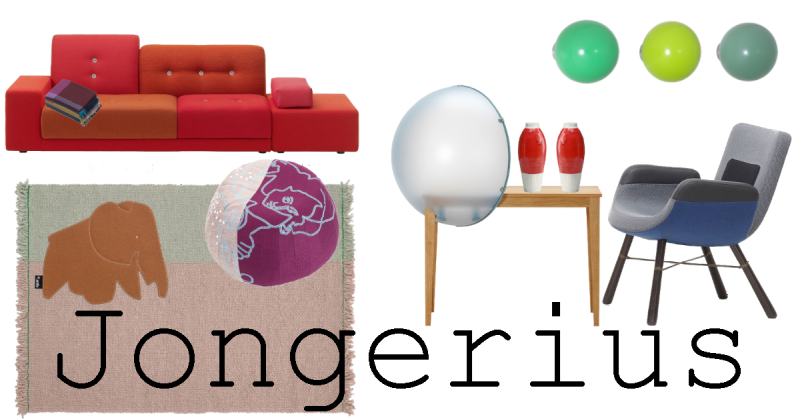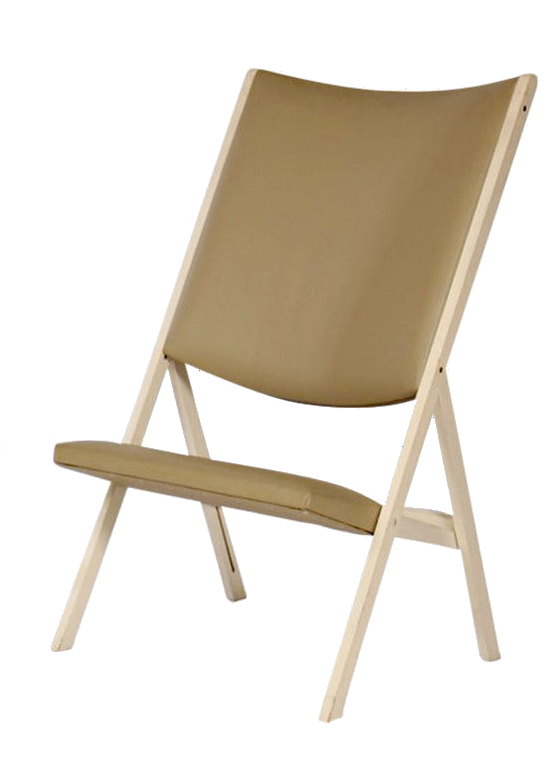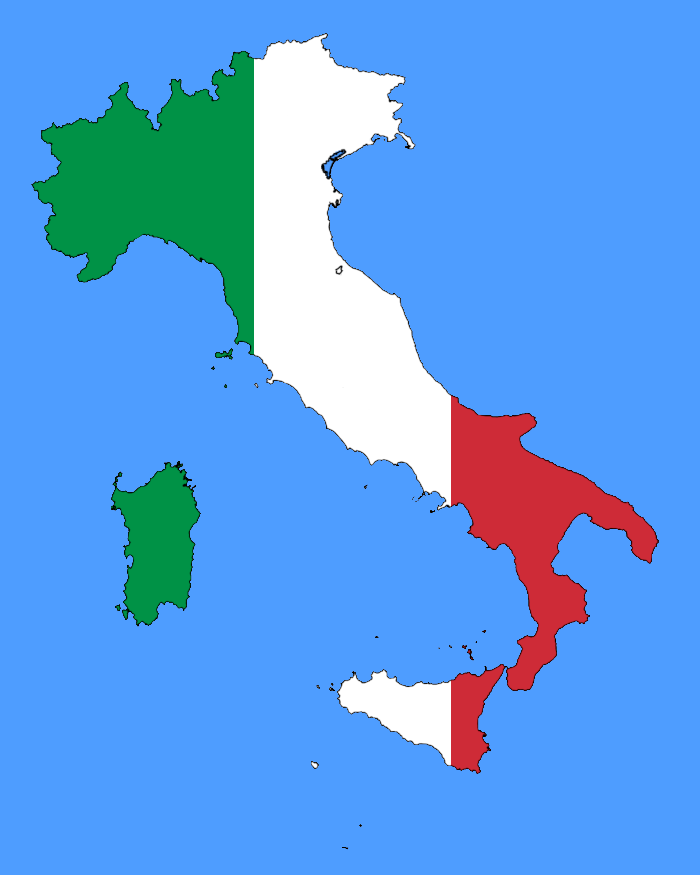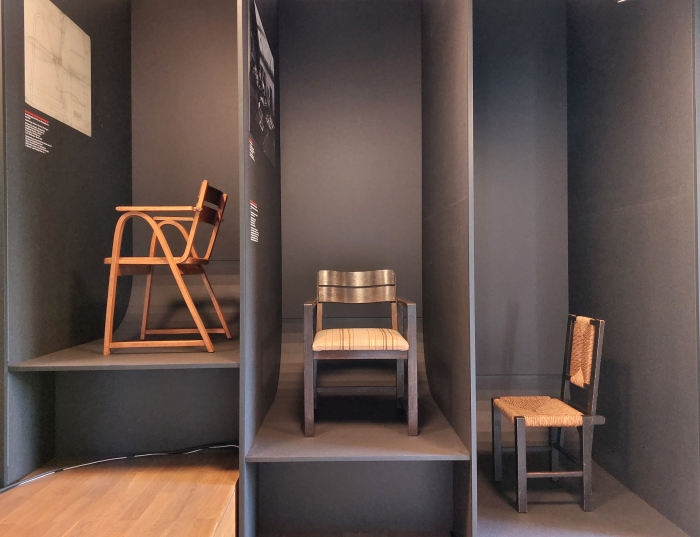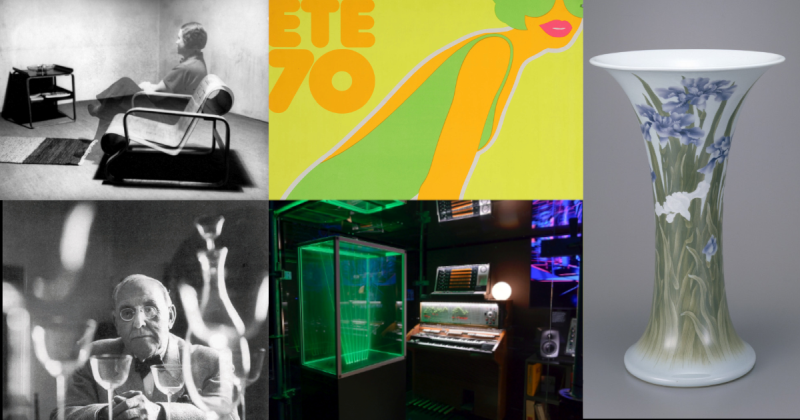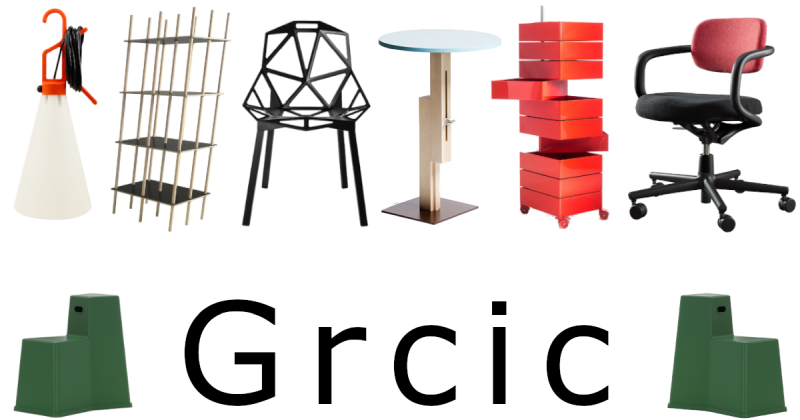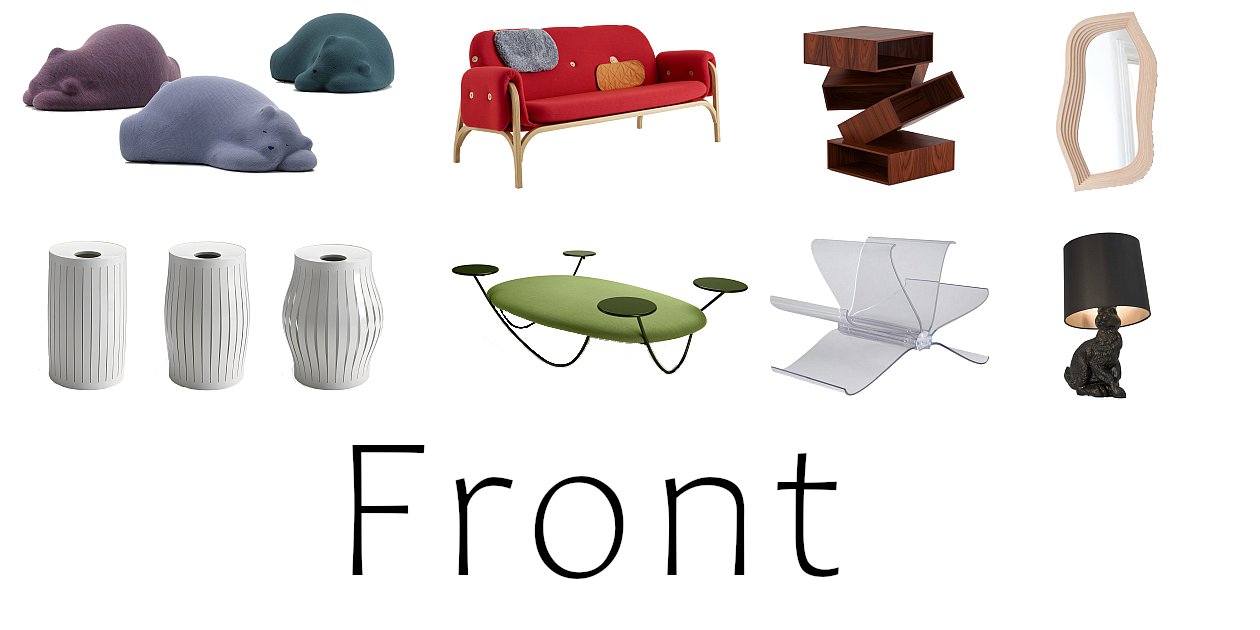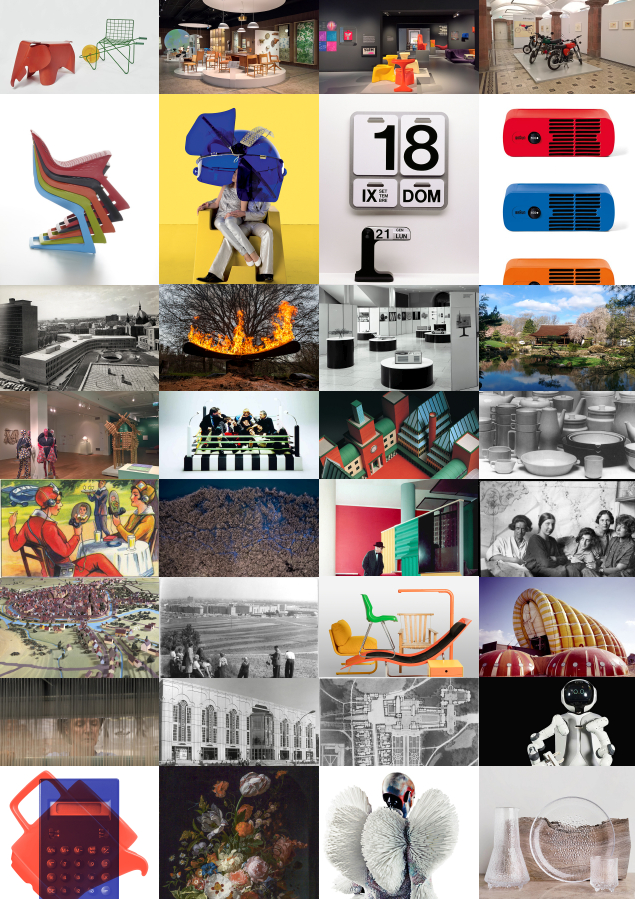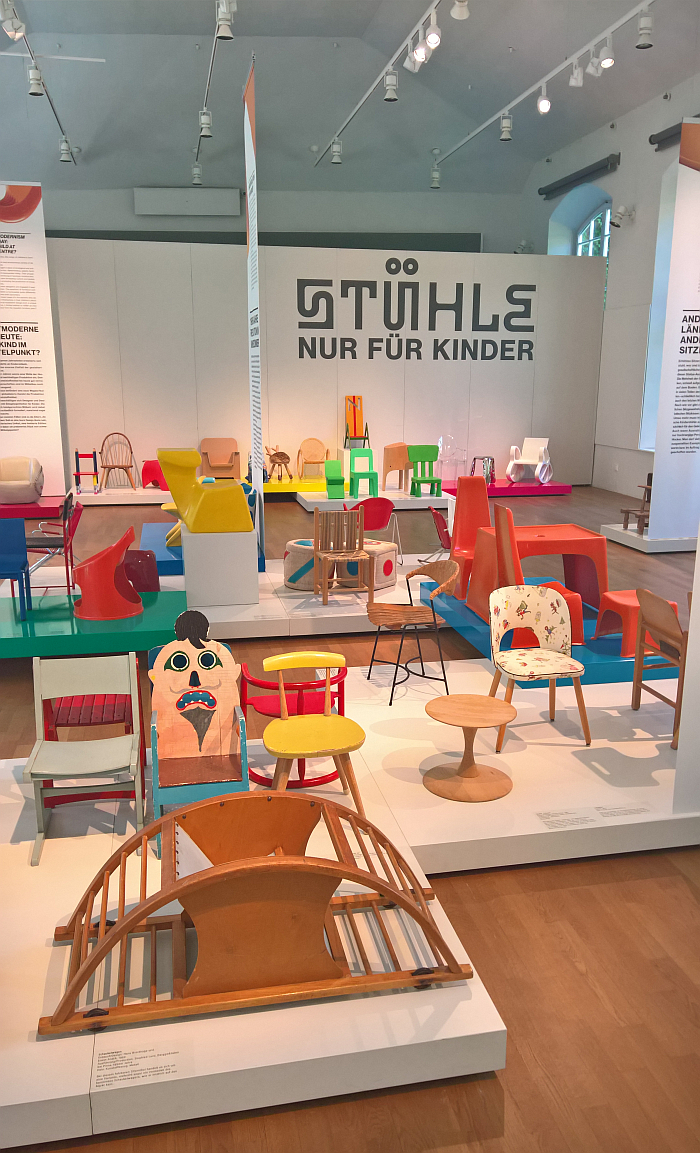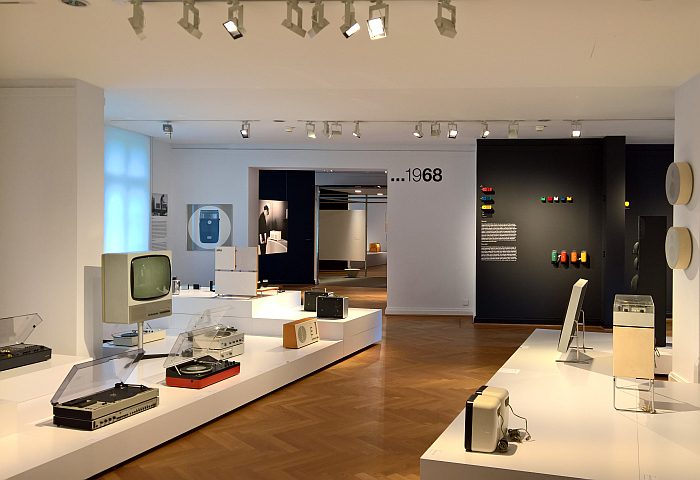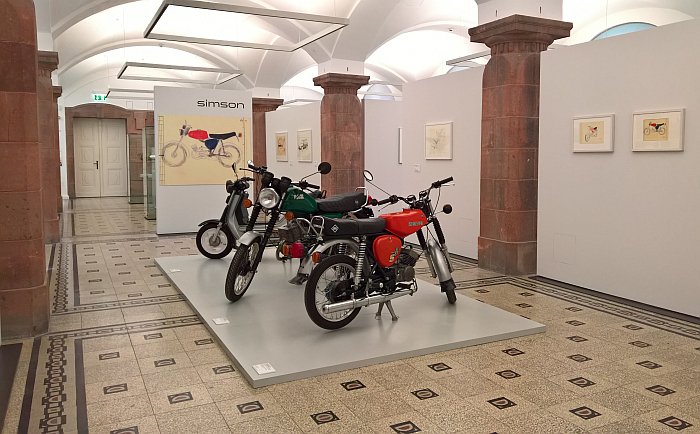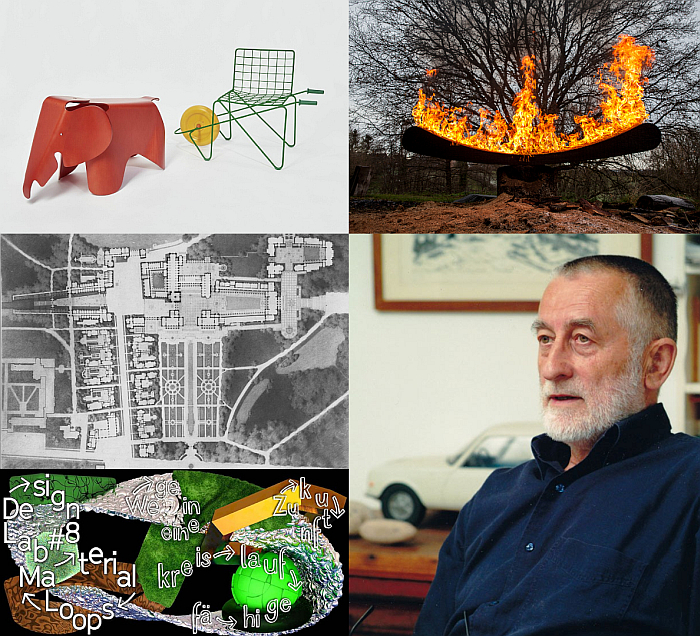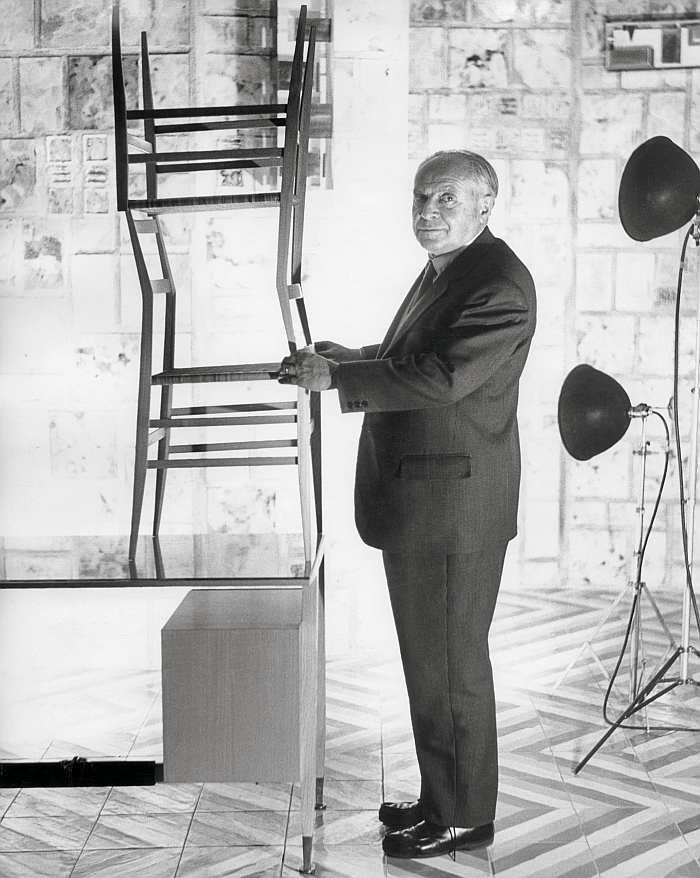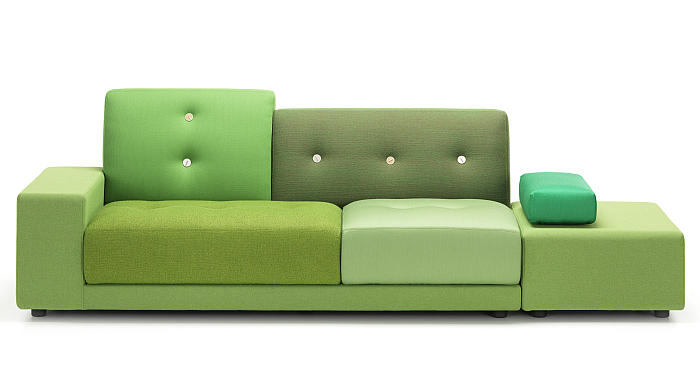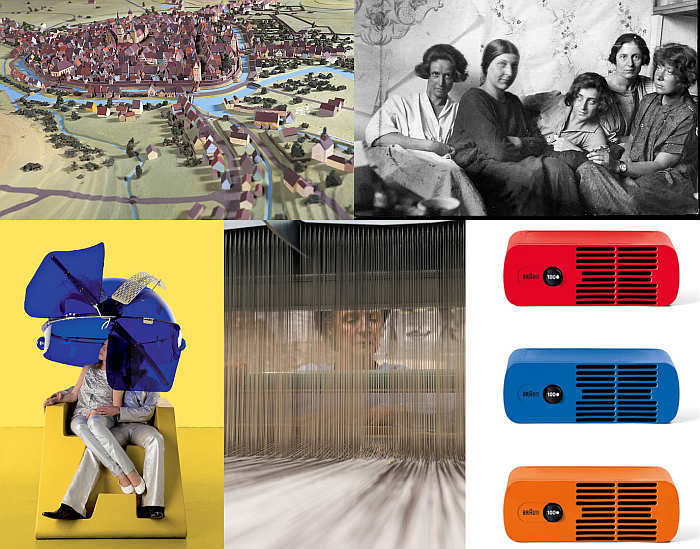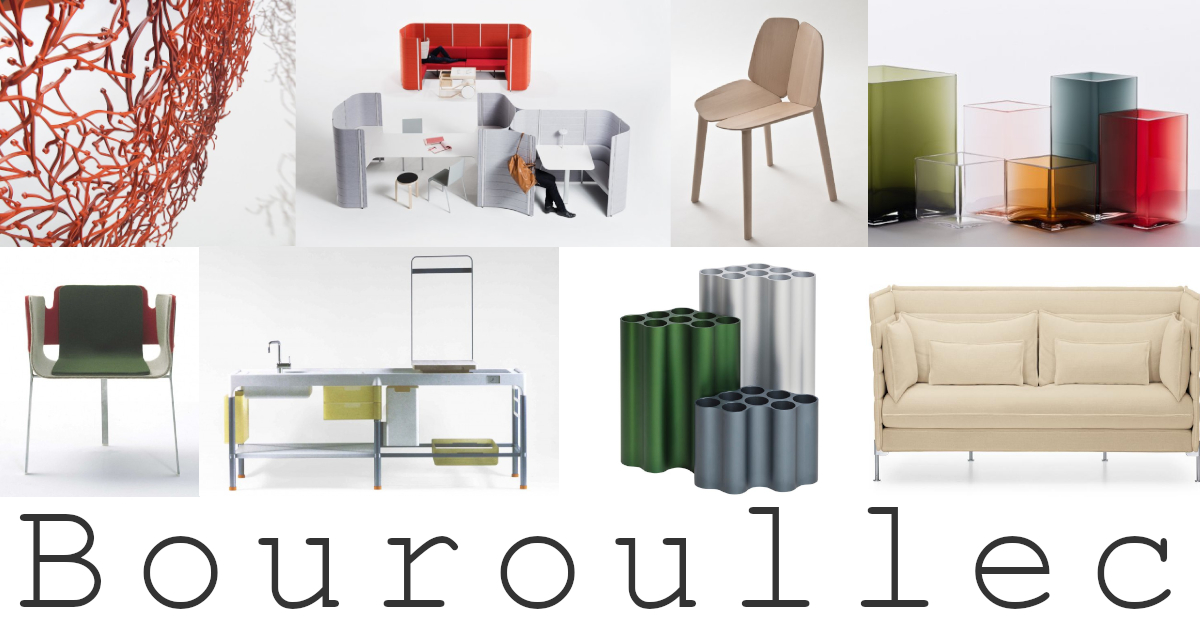Category: Producer
Stockholm Furniture Fair 2023: Say Hej! to… Ondulé by Anton Björsing for Karl Andersson & Söner
Willy Guhl. Thinking with Your Hands at the Museum für Gestaltung, Zürich
The Swiss Design Lounge on the first floor of the Museum für Gestaltung, Zürich, is home to selected works by the good and great of 20th and 21st century Swiss furniture, lighting and textile design, including, and amongst many others, Bruno Rey, Ubald Klug, Hans Eichenberger or Susi and Ueli Berger, works which not only stand in discourse with one another but also actively invite visitors to try them out, to spend time with them, to get to know them; and while you are, and while you enjoy yourself, while your making new friends, from outside, works by Willy Guhl, thick with the lichen and moss that rolling stones don’t gather, gaze through the windows on this scene of domestic harmony and mutual appreciation.
One could be forgiven for imagining that the scenography was in some way a comment on, a metaphor for, Willy Guhl’s place in the (hi)story of design: outside, on the periphery, faded by the merciless passage of time.
Viewing the Museum für Gestaltung, Zürich’s, exhibition Willy Guhl. Thinking with Your Hands, enables a differentiated perspective, on both Willy Guhl and on the Swiss Design Lounge…….
The Historia Supellexalis: “N” for Netherlands
Netherlands
A Gulf; A Commonwealth; A Context
The Historia Supellexalis: “M” for Moormann
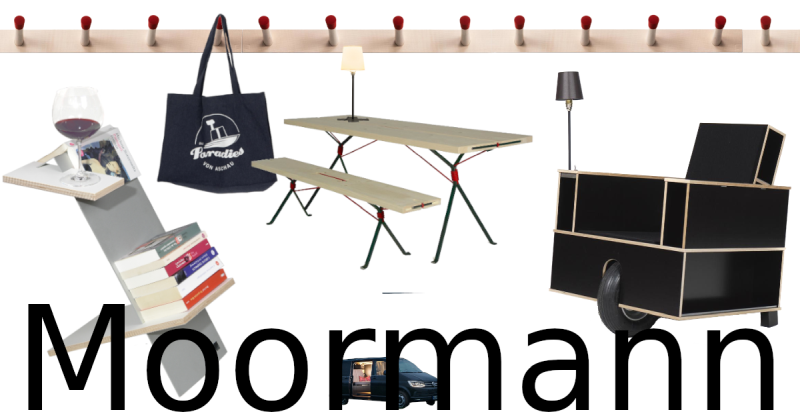
Moormann
A Nils Holger; An Autodidact; A Restlessness
#officetour Milestones – A chair “just high enough that one can sit half-standing”
“For men who have to write a lot, and over prolonged periods, a desk at which they can work standing up is an indispensable piece of furniture for altering their posture and for maintaining their health”, opined Journal der Moden in May 1786. An age when, famously, only men wrote.
Yet advantageous and positive as standing to write was, prolonged standing could, as Journal der Moden notes, lead to tiredness.
A solution was however at hand for all who preferred working at a standing height desk over a prolonged period: a chair, “or a so called donkey … on which one sits as if on a saddle, and which must be just high enough that one can sit half-standing…”1
A half-standing sitting solution whose nickname can be readily derived from the proposed sitting position.
And a half-standing sitting solution that for all it is thoroughly familiar today, was novel, one could almost argue revolutionary, and even enlightened, in 1786…….
PRINT3D. Reprint Reality at the CaixaForum, Sevilla
For all that the (hi)story of architecture and design is one staged against a background of economic, social, environmental, cultural, et al evolutions and developments, it is also a (hi)story fundamentally dependent upon developments and evolutions in materials, and also in the development and subsequent evolution of novel technologies. Novel technologies and materials which not only enable new approaches to the construction of our buildings and the manufacturing of our objects of daily use, but also enable new forms which offer the possibility of new functionalities and new relationships; new functionalities and new relationships appropriate for and demanded by the age, appropriate for and demanded by the contemporary economic, social, environmental, cultural, et al realities. And which ultimately allow that age to develop into, segue into, the next.
With PRINT3D. Reprint Reality the CaixaForum, Sevilla, allow space for reflections on the actuality, and future possibilities, of 3D printing, a technology that although it has been around for a few decades is, arguably, only now starting to fully reveal its potential and indicate where and how it could contribute to the future of architecture and design. And thereby contribute to future society…….
The Historia Supellexalis: “K” for Knoll
Knoll
A Wilhelm; A Walter; A Willy; A Hans; A Florence; A Lineage
The Historia Supellexalis: “J” for Jongerius
Jongerius
A Hella; A Lab; An Open-ended exploration
Lost Furniture Design Classics: The Gabriella Chair by Gio Ponti for Walter Ponti
“Dear Architect” wrote Maria Chinaglia Ponti in 1967 to the architect, but no relation, Gio Ponti, “why don’t you design us some modern furniture? Daddy Walter is worried because our traditional stuff is not selling as it used to”.1
An unsolicited request, from a company of whom he’d never heard, an architect of the status of a late 1960s Gio Ponti could have turned down, it wasn’t as if a late 1960s Gio Ponti needed the commission; however, something about the letter from Maria Chinaglia Ponti interested, intrigued, Gio Ponti. Beyond the shared surname. For as he continues, in his recounting of the tale, “Ci vado“.
“I went to see them”…….
Chairs: Dieckmann! The Forgotten Bauhäusler Erich Dieckmann at Neuwerk 11, Halle
“…one only finds warmth of life and sincerity where human nature is allowed to flourish”, opined the German designer Erich Dieckmann in 1931, “one shouldn’t forget that in our apartments. Let’s treat our contemporary homes to something humane. Something unelaborate, something provisional, with some leeway and space for things to grow as they wish over time.”1
With the exhibition Chairs: Dieckmann! The Forgotten Bauhäusler Erich Dieckmann, the Kunststiftung des Landes Sachsen-Anhalt and Staatlichen Museen zu Berlin extend an invitation to explore how Erich Dieckmann understood an unelaborate, humane, contemporary apartment full of leeway and space to grow…….
5 New Architecture & Design Exhibitions for December 2021
In 1922 the Scottish novelist J.M. Barrie told the undergraduates at St. Andrews University “you remember someone said that God gave us memory so that we might have roses in December”, an allusion to the summer of your life filling your darkening winter days with colour and aroma, and an analogy he neatly reinforces a little later with a, “you have June coming”.1
But that was 1922. Roses were seasonal. Today roses are available all year round, which is not only symbolic of the short-sighted idiocy with which we’re intent on destroying our planet, but also means the rose has been reduced from a metaphor that can be so poignantly and joyously employed as Barrie did, to a cheap, stereotypical, derivative trope devoid of real meaning.
Not that a century later we can’t all do things to ensure that as we progress down life’s highway, as we all approach our own, personal, December, we do so with our emotional and mental capacities fully stimulated and finely honed. Amongst the most rewarding method of which is the regular visit to architecture or design exhibitions: spaces, experiences, whose intellectual and cultural stimulation and nourishment mean that it can be forever June.
Our five new Junes blooming forth in the non-metaphoric December 2021, can be found in Vienna, New York, Düsseldorf, Kanazawa and Paris.
And as ever in these times, if you are planning visiting any exhibition please familiarise yourself in advance with the current ticketing, entry, safety, hygiene, cloakroom, etc rules and systems. And during your visit please stay safe, stay responsible, and above all, stay curious……
The Historia Supellexalis: “F” for Front
Front
An Anna; A Sofia; A Charlotte; A Katja; A Conduit.
32 new-ish Architecture & Design Exhibitions for August 2021
We published our first exhibition recommendations list in November 2013, and have diligently, and joyfully, ended every month since with a list of five architecture and design related exhibitions opening in the coming month that appear worthy of a recommendation.
A tradition we very much planned to continue in July 2021 for August 2021.
And would have; however, having undertaken our regular tour through our database of international museums and galleries, we can find but two exhibitions opening in August 2021 we, in all good conscience, can recommend. And while we don’t always stick religiously to the 5 in months of scarcity, 2 is… 2 few. And so we’ll find another way to integrate them into the blog.
August is always slow for new exhibitions, primarily because, and certainly in the USA and Europe, everyone is on holiday; however, we get the feeling that August 2021’s paucity is related to the realities of the past few months.
Any exhibition is the result of years of planning, years of planning that never feels quite long enough, and events such as a Covid pandemic that eats into that limited time have a very real effect on the preparation and realisation of exhibitions; meaning that all museums have been forced to reschedule their programmes, a rescheduling that in addition to a great many, and regrettable, cancellations has seen many museums extend the runs of those exhibitions that are open until the accrued losses in time can be made good.
And which, we very much get the feeling, means many museums are waiting for autumn 2021 (northern hemisphere)/spring 2021 (southern hemisphere) to launch new exhibitions, to re-set their programmes and planning schedules. Which means that for September 2021 and October 2021 we may very well get two lists for each month. All going to plan.
But means for August 2021, rather than 5 new openings… 32 architecture and design exhibitions already running that are, or certainly appear to be, worthy of a recommendation.
And as ever in these times, if you are planning visiting any exhibition please familiarise yourself in advance with the current ticketing, entry, safety, hygiene, cloakroom, etc rules and systems. And during your visit please stay safe, stay responsible, and above all, stay curious……
Chairs. For children only! at the Grassi Museum für Angewandte Kunst, Leipzig
What is a chair?
You sure?
With the exhibition Chairs. For children only! the Grassi Museum für Angewandte Kunst, Leipzig, explore the (hi)story of and developments in children’s seating, and in doing so not only allow for insights into an all too often undervalued, underappreciated, ignored, genre of furniture, but also forces you to reconsider your response to what you thought was a very, very straightforward question…
Braun 100 at the Bröhan-Museum, Berlin
Braun occupy a special, ¿unique?, position not only in the mythology of product design but also in the (hi)story of West Germany; arguably no brand is as closely related with and to West Germany as Braun.
With the exhibition Braun 100 the Bröhan-Museum, Berlin, explore the development of design at Braun in the post-War decades and in doing so help one approach differentiated understandings of not only Braun and Braun design, but also of the relationships between Braun, design and West Germany…….
Simson, Diamant, Erika. Formgestaltung von Karl Clauss Dietel at the Kunstsammlungen Chemnitz
“In his work the designer seeks to find the constancy of the good”, wrote Karl Clauss Dietel in 1973, a lightly articulated yet not so straightforward task for, as he continues, not only is the assessment of such dependent on a myriad varying factors, but “the search for what defines design, what it grows from, where it comes from and where it wants to go, takes on new dimensions against the background of our cultural upheaval”.1
With the exhibition Simson, Diamant, Erika. Formgestaltung von Karl Clauss Dietel the Kunstsammlungen Chemnitz allow insights into not only how Karl Clauss Dietel understood “what defines design, what it grows from, where it comes from and where it wants to go” but how those understandings aided and abetted him in his own search for, understanding of, “the constancy of the good”…….
5 New Architecture & Design Exhibitions for June 2021
“I wonder what it would be like to live in a world where it is always June”, ponders Anne Shirley in Lucy Maud Montgomery’s 1915 novel Anne of the Island.
“You’d get tired of it”, sighs her adoptive mother Marilla Cuthbert by way of reply.
“I daresay”, responds Anne, “but just now I feel that it would take me a long time to get tired of it…”
Thoughts we very much concur with as we survey and contemplate the varied profusion of new architecture and design exhibitions sprouting forth in June 2021. Who could ever tire of such a joyous abundance? Who?
Our five recommendations from that early summer crop can be found in Leipzig, Hornu, Berlin, Bloomfield Hills and Chemnitz…….
TASCHEN Verlag presents Gio Ponti: A coffee table book that comes with its own coffee table
In 1935 George Nelson opined that “the history of art in Italy presents the astonishing spectacle of a series of men who knew no boundaries between the arts”; a history, a tradition, Nelson saw continued into 1930s Italy through “the cheering example of Gio Ponti, who found early in life that no one profession was sufficient to use up his energy or exhaust his interests, and added others with the nonchalance of a small boy increasing his collection of marbles”.1
A borderless, inexhaustible collection of marbles explored and discussed in the new Gio Ponti monograph from TASCHEN Verlag……
Design. Colour. Theory.: Hella Jongerius – I don’t have a favourite colour
As the title of Hella Jongerius’s 2016 book I don’t have a favourite colour succinctly explains, Hella Jongerius doesn’t have a favourite colour.
Not that Hella Jongerius is indifferent about colours.
Far from it.
And in explaining why colours are important to her, and why she doesn’t have a favourite colour, Hella Jongerius helps one approach a better understanding not only of colours, nor only of our relationships with and to colours, but also helps one approach a better understanding of the functionalities of colour…….
5 New Architecture & Design Exhibitions for April 2021
As the 19th century English poet Robert Browning so very, very, nearly phrased it:
Oh, to be in Berlin, Vienna, Chemnitz, ‘s-Hertogenbosch, or Berlin (again),
Now that April’s there,
And whoever wakes in Berlin, Vienna, Chemnitz, ‘s-Hertogenbosch, or Berlin (again),
Sees, some morning a most interesting, entertaining and instructive sounding architecture and/or design exhibition,
While the chaffinch sings on the orchard bough……
The Historia Supellexalis: “B” for Bouroullec
Bouroullec
A Ronan; An Erwan; An unassuming, poetic, connection.
